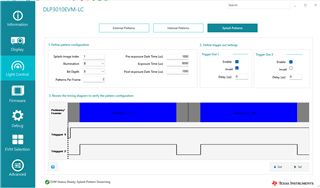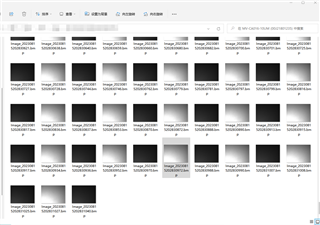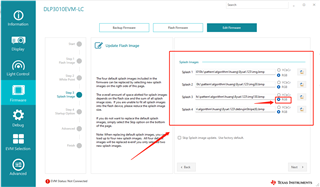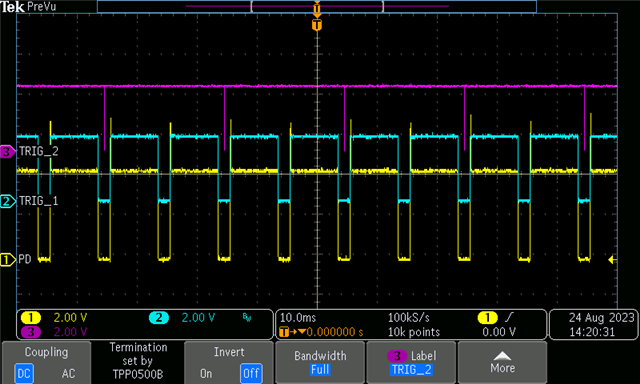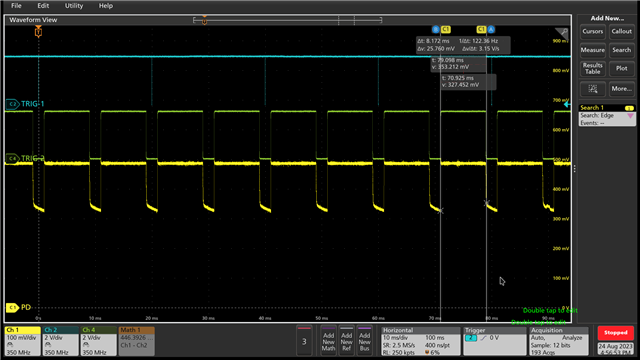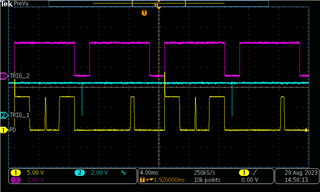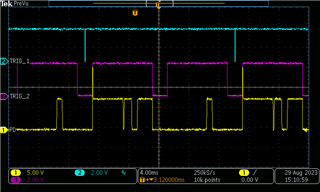Other Parts Discussed in Thread: DLP4710EVM-LC
Dear engineer, hello!
I have a question for you!I used DLP3010EVM-LC to do Splash Patterns test.My Settings are as shown in picture 1.I used image 4 for the projection. The result captured by the camera is as shown in picture 2. The color of one picture is darker and the color of another picture is lighter. My test environment looks like Figure 3. I used Trigger2 to take trigger shots on the camera. The camera's exposure time is the same as the DLP's exposure time of 8000us.
I don't know why there is a dark color and a light color picture effect. I thought at first that the color of the pictures that came back from the camera was the same. Because I set the bit depth of the RGB three channels of SPLASH IMAGES to be the same. So ask you.
